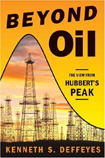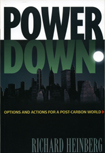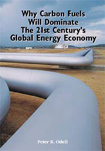


Check out this month's On the Web links, your connection to earth science friendly Web sites. The popular Geomedia feature now available by topic.
Maps:
An elevated view of Earth
Books:
With oil or without it? A glimpse at four more recent
books on the future of petroleum in the 21st century
  |
| The two images of the Polynesian islands Bora Bora, Tahaa and Raiatea (from top to bottom) demonstrate the differences in satellite imaging techniques. On the left is an image from the Landsat 7 satellite, in which cloud cover over the area is readily seen, although atmospheric haze has been suppressed. It also “sees through” the water to the reefs surrounding the islands. The image on the right is that of the Shuttle Radar Topography Mission, which has eliminated the problem of cloud cover and shows only the land topography in detail. This map is part of the final dataset released by NASA, which also includes Australia and New Zealand. All images courtesy of NASA/JPL/NIMA. |
 Beyond
Oil: The View from Hubbert’s Peak Beyond
Oil: The View from Hubbert’s Peak by Kenneth S. Deffeyes. Hill and Wang, 2005. ISBN 0 8090 2956 1. Hardcover, $24. |
 Powerdown:
Options and Actions for a Post-Carbon World Powerdown:
Options and Actions for a Post-Carbon World by Richard Heinberg. New Society Publishers, 2004. ISBN 0 8657 1510 6. Paperback, $16.95. |
 Why
Carbon Fuels Will Dominate the 21st Century’s Global Energy Economy Why
Carbon Fuels Will Dominate the 21st Century’s Global Energy Economy
by Peter R. Odell. Multi-Science Publishing Co. Ltd. (U.K.), 2004. ISBN 0 9065 2222 6. Paperback, $58. |
 Winning
the Oil Endgame Winning
the Oil Endgameby Amory B. Lovins, E. Kyle Datta, Odd-Even Bustnes, Jonathan G. Koomey and Nathan J. Glasgow; edited by Beatrice T. Aranow. Rocky Mountain Institute (U.S.) & Earthscan (U.K.), 2004. ISBN 1 8810 7110 3. Paperback, $40. |
In The Prize: The Epic Quest for Oil, Money, and Power (1992), Daniel
Yergin described the 20th century as the “Hydrocarbon Age.” As we
are in the early years of the 21st century, pundits from various walks of life
are speculating about the future of petroleum and energy in our world.
Since visiting this topic on these pages last November,
I have reviewed four new books that represent four different views on this issue
and bring some perspectives into balance.
One school of thought advocated by several retired petroleum geologists foresees
an imminent peak in the world’s oil production, popularly called Peak Oil
or Hubbert’s Peak, which is named after the late M. King Hubbert, who formulated
the methodology of predicting the oil peak. In his 2001 book, Ken Deffeyes,
a professor of geology at Princeton and a former colleague of Hubbert, made
two predictions about the timing of peak oil, 2003 and 2007. In his new book,
Beyond Oil: The View from Hubbert’s Peak, he states that the oil
peak will occur in late 2005 or in early 2006, and nominates Thanksgiving day,
Nov. 24, 2005, as “World Oil Peak Day.”
There is no reason to believe that this new prediction is any more accurate
than the author’s previous ones. And the Thanksgiving World Oil Peak Day
is, in my view, a misleading idea (although a catchy title) for the general
public. He does not say how to test this type of prediction, but if the data
of world reserves and production are the keywords to watch, let’s do it
for the next few years. My guess is that both these data and the predictions
will change (as they have in the past).
Deffeyes is at his best when he explains the geology and inner workings of hydrocarbon
resources, including oil, natural gas, coal, tar sands, heavy oil and oil shale,
and two other resources, uranium and hydrogen. He combines his writing with
his long experience teaching geology and his admirable sense of wit and wisdom,
and the result is an entertaining book.
Deffeyes rightly points out that hydrogen is not a resource unto itself; we
need energy to extract hydrogen as an energy resource. He also argues that we
cannot afford to ignore the nuclear option, and honestly states that renewable
energy resources are useful, but that he did not include them in his book because
they are outside his specialty.
Renewable energy resources, coupled with reducing energy consumption in rich
nations and reducing world population, form the core of Richard Heinberg’s
perspective for a world free from oil, environmental pollution and resource
wars. In his new book, Powerdown: Options and Actions for a Post-Carbon World,
he forwards a second school of thought on the world’s oil peak. Promoted
by environmentalists and activists, this viewpoint takes for granted the data
and analyses of the oil peak, and then weaves together the oil issue with other
social and environmental issues to construct gloomy future scenarios for the
world.
Of course, few readers would disagree with a nonpolluted, cooperative and peaceful
world. But to move toward these noble goals, we do not have to start from Heinberg’s
assumptions and hasty assessments of the end of “cheap” oil (how much
is “cheap” oil?) and the “collapse” of civilization.
While Heinberg has his best wishes for a post-carbon world, Peter Odell, a professor
emeritus at Erasmus University, Rotterdam, argues that carbon fuels will continue
to supply the world’s energy throughout the 21st century. He belongs to
a third school of thought, pioneered mostly by energy economists, which points
out many failures of oil shortage predictions in the past and offers scenarios
in which market forces, human intelligence and resources, along with technological
fixes and advances, overcome energy crises and shortages. Odell places the theoretical
Hubbert’s Peak at 2030 for conventional oil, assuming that ultimate recoverable
oil reserves are 3,000 billion barrels (this contrasts with Deffeyes’ estimate
of 1,800 billion barrels in his previous book and 2,100 billion barrels in his
new book). Including unconventional hydrocarbons in the mix, Odell places the
peak year at 2060. He foresees that sequestration of carbon dioxide will solve
the global warming problem, and that as demand for oil decreases, natural gas
will dominate the world in the second half of this century.
Odell steps out of his area of expertise when he argues for the abiotic origin
of oil — that hydrocarbons may be generated deep in Earth’s interior.
From this view, hydrocarbons (like geothermal energy) become renewable sources.
Few petroleum geochemists, however, would agree with this idea. The oil found
in sedimentary basins is derived from organic materials, as numerous geochemical
analyses have demonstrated.
Researchers at the Rocky Mountain Institute led by Amory Lovins (author of several
influential books, such as Soft Energy Paths, published in 1977) ascribe
to a fourth school of thought (and a relatively newer one). They do not dwell
much on predictions and speculations, but rather suggest what practical steps
and specific investments need to be made to create a better energy future for
the world.
Their new book, Winning the Oil Endgame, is in the spirit that Antoine
de Saint-Exupéry once mentioned: “As for the future, your task is
not to foresee it, but to enable it.” The authors propose a plan to gain
oil independence by 2025 via energy conservation and by gradually substituting
oil with biofuels and natural gas. Their plan requires an investment of $180
billion.
The idea of oil independence has become a quite fashionable slogan these days,
and there are two issues here: first, reducing dependency on oil, and second,
reducing dependency on foreign oil. I think it is unlikely to achieve the second
without achieving the first, and this is also an important path these authors
have taken.
Essentially, Amory and colleagues suggest going beyond the oil age with oil
(not without it), and this practical idea may carry us through to a new energy
future.
 |
Geotimes Home | AGI Home | Information Services | Geoscience Education | Public Policy | Programs | Publications | Careers |